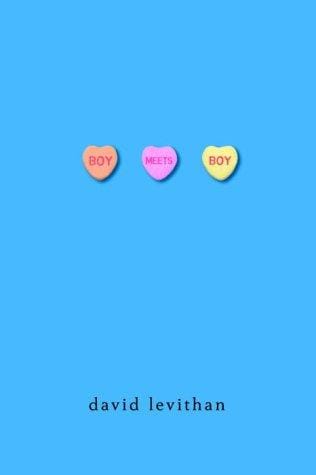Boy Meets Boy: Celebrating a Ground-Breaking LGBTQ+ YA Classic
Explore the plot, themes, and cultural impact of David Levithan’s groundbreaking YA novel Boy Meets Boy and discover why its joyful LGBTQ+ story still matters.

Introduction
When David Levithan released Boy Meets Boy in 2003, the young-adult landscape was vastly different from today’s increasingly diverse shelves. Levithan’s luminous novel imagined a high-school experience where queerness was not merely tolerated but joyfully accepted. Two decades later, its heartfelt romance, utopian setting, and buoyant humor continue to win new readers while reminding longtime fans why inclusive storytelling matters.
Plot Summary
The story centers on Paul, an openly gay sophomore who lives in a suburb unlike any other. In Paul’s town, the star quarterback is also the homecoming queen, the cheerleading squad shimmies on Harley-Davidsons, and the local bookstore doubles as a community hub for every flavor of teen. Into Paul’s already colorful life walks Noah, a gentle, art-loving newcomer still nursing wounds from a homophobic past.
From the moment Paul meets Noah at a dance, sparks fly. Yet obstacles soon appear: Paul’s ex-boyfriend Kyle tries to rekindle what they once had, Paul’s best friend Joni starts dating a controlling jock, and Noah’s trust issues make him wary of getting hurt again. Over one whirlwind week, Paul must learn that real love demands honesty, patience, and a willingness to grow.
Memorable Characters
Levithan populates his novel with characters who leap off the page. There’s Infinite Darlene, the aforementioned quarterback-queen whose charisma fills every hallway; Toni, Paul’s trans friend who coaches classmates on allyship; and Mrs. Infinity, the theater teacher whose assignment to stage a musical inside a bookstore epitomizes the town’s eccentric charm. Each character embodies a facet of teenage life while contributing to a larger message of acceptance.
Themes That Resonate
Radical Acceptance
Perhaps the book’s most striking aspect is its utopian vision. By normalizing queer joy instead of centering trauma, Levithan invites readers to imagine schools where LGBTQ+ teens thrive without fear. This optimistic lens doesn’t ignore prejudice entirely—Noah’s backstory shows its lingering impact—but it refuses to let hate define the narrative.
First Love & Self-Discovery
Like many YA romances, Boy Meets Boy revels in the fluttery uncertainty of first love. Paul’s internal monologue captures late-night phone calls, mural-painting dates, and the agony of sending an unreturned text. Yet the novel also portrays love as a catalyst for self-reflection: Paul must confront his tendency to act before thinking and his assumptions about other people’s boundaries.
Friendship & Community
Friendships anchor every chapter. Whether Paul is helping Infinite Darlene redesign a homecoming float or mediating a rift between Joni and their friend Tony, Levithan highlights how communities support individual growth. The novel suggests that true progress happens when people look out for one another and challenge injustice together.
A Utopian World With Purpose
Critics sometimes label the book unrealistic, but Levithan has said he intentionally created a best-case scenario to counterbalance shelves already crowded with queer tragedy. This strategic optimism can spark conversations about real-world disparities while giving readers a hopeful blueprint for inclusive spaces. In classrooms, the town’s policies and social norms make excellent discussion points for comparing fiction with students’ lived experiences.
Impact & Legacy
Boy Meets Boy arrived years before marriage equality in the United States and long before mainstream media embraced LGBTQ+ storylines. Its very existence signaled to publishers that affirming queer narratives had an eager audience. Authors such as Becky Albertalli, Adam Silvera, and Leah Johnson cite Levithan as an inspiration for writing unapologetically joyful LGBTQ+ romances.
The novel has also faced challenges and bans, illustrating the ongoing battle over whose stories deserve shelf space. Each challenge, however, only underscores the book’s importance: denying young readers access to affirming literature can stunt empathy and self-acceptance.
Why You Should Read It Today
Whether you’re a teen looking for representation, a parent seeking inclusive titles, or a teacher curating a diverse syllabus, Boy Meets Boy delivers a timeless reminder that love—queer or otherwise—can be carefree, hilarious, and profoundly transformative. Its breezy pace makes it a perfect weekend read, yet its ideas linger long after the final page.
Teaching Tips
Pair the novel with discussions on LGBTQ+ history or have students design their own inclusive school policies inspired by Paul’s town. Creative projects—like painting symbolic murals as Noah does—allow artistic learners to engage with themes visually.
Conclusion
Two decades on, Boy Meets Boy remains a beacon of optimism in YA literature. By imagining a world where acceptance is the norm, David Levithan challenges readers to build that reality beyond the page. In doing so, he proves that sometimes the most radical act is simply letting love shine.



